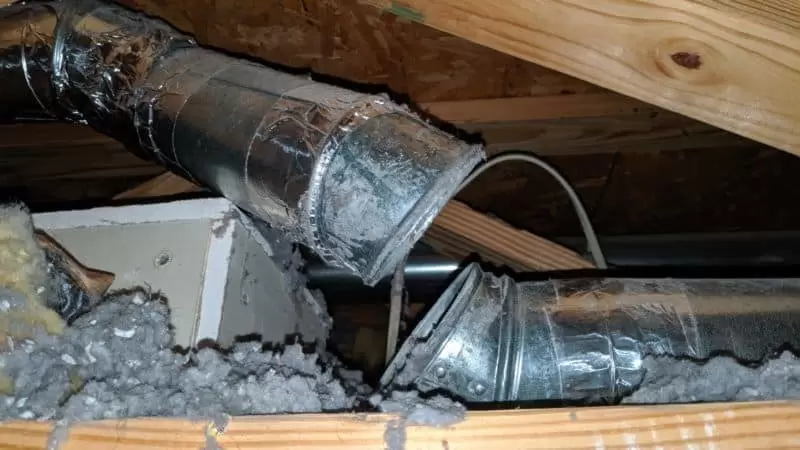While having HVAC ductwork in the attic is a common practice in many homes, it comes with its own set of potential issues and challenges. Understanding these risks is crucial for homeowners to address and mitigate any problems that may arise. In this blog post, we’ll explore the potential issues with having HVAC ducts in your attic and discuss strategies to minimize their impact on your home’s comfort and efficiency.
- Heat Loss and Gain: One of the primary concerns with HVAC ducts in the attic is the potential for heat loss in winter and heat gain in summer. Attics are often unconditioned spaces, meaning they are not heated or cooled like the rest of the home. This can result in ducts losing or gaining heat depending on the season, reducing the efficiency of your HVAC system and impacting indoor comfort.
- Energy Efficiency: Ducts in unconditioned attics are susceptible to temperature fluctuations, especially in extreme weather conditions. This can lead to increased energy consumption as the HVAC system works harder to compensate for heat loss or gain in the ductwork. Poorly insulated or leaky ducts exacerbate energy inefficiency, resulting in higher utility bills.
- Condensation and Moisture: Attics can experience temperature variations that may cause condensation to form on duct surfaces, especially during humid conditions. Moisture buildup in ducts can lead to mold growth, corrosion of duct materials, and potential damage to insulation. It’s essential to address moisture issues promptly to prevent these problems.
- Insulation and Sealing: Proper insulation and sealing of ductwork in the attic are crucial for maintaining energy efficiency and preventing heat transfer. Inadequate insulation or gaps in duct sealing can lead to heat loss or gain, reduced system performance, and comfort issues throughout the home.
- Air Quality Concerns: Ducts in the attic are exposed to dust, debris, and potential contaminants that can enter the HVAC system and circulate indoor air. Regular duct cleaning and maintenance are essential to minimize air quality issues and ensure clean, healthy indoor air for occupants.
- Accessibility for Repairs: Accessing ductwork in the attic for repairs or maintenance can be challenging and may require professional assistance. Proper planning and design considerations, such as access panels or pathways, can facilitate easier access to ducts when needed.
- Strategies for Mitigation:
- Insulation: Ensure that ductwork in the attic is properly insulated with appropriate insulation materials to minimize heat transfer and energy loss.
- Sealing: Seal duct joints, connections, and seams with duct sealant or mastic to prevent air leaks and improve system efficiency.
- Ventilation: Provide adequate ventilation in the attic to reduce moisture buildup and humidity levels, helping prevent condensation and mold growth.
- Regular Maintenance: Schedule regular HVAC system maintenance, including inspection of ductwork, cleaning, and repairs as needed to address any issues promptly.
- Professional Assessment: Consider hiring a qualified HVAC technician or contractor to assess the condition of ductwork in the attic and recommend appropriate solutions for optimizing efficiency and comfort.
In conclusion, while having HVAC ducts in the attic can pose challenges, proper insulation, sealing, maintenance, and ventilation strategies can help mitigate potential issues and ensure efficient operation of your HVAC system. By addressing these concerns proactively, homeowners can enjoy improved energy efficiency, comfort, and indoor air quality in their homes.

